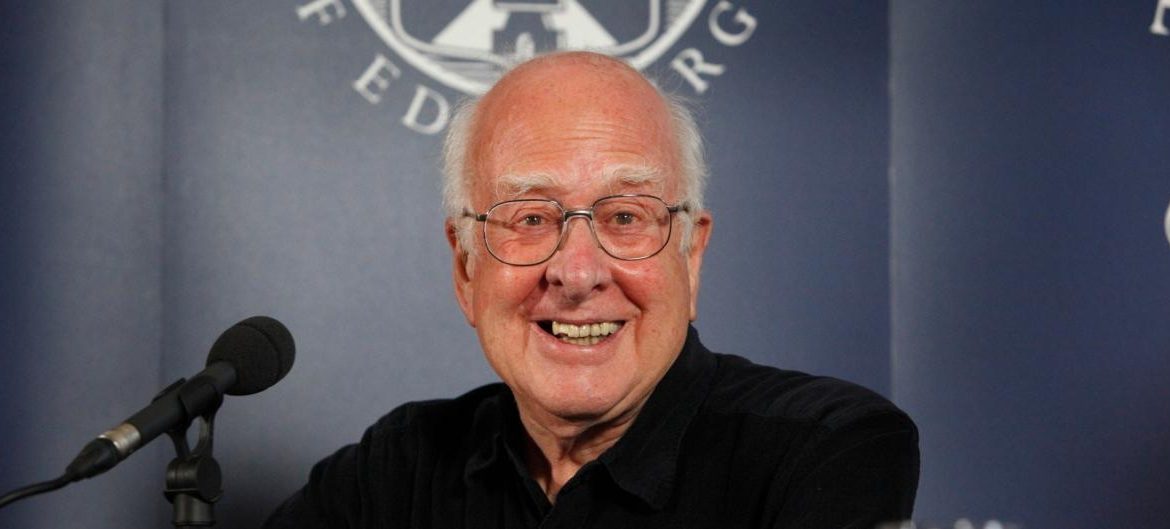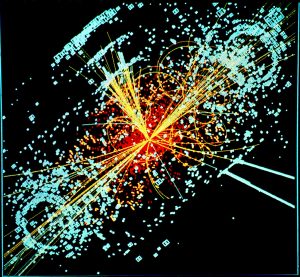
A Genius in Particle Physics: Peter Higgs and His Legacy
The revered British theoretical physicist, Professor Peter Ware Higgs, who passed away on April 8th this year, has left behind an irreplaceable mark on particle physics. His most pivotal contribution lies in the theory of the Higgs field and the Higgs boson, fundamentally reshaping our comprehension of how mass manifests within subatomic particles.
Born on May 29, 1929, in Newcastle, England, Peter Higgs exhibited an early affinity for physics. His academic odyssey began at King’s College London, where he obtained his bachelor’s, master’s, and doctoral degrees in physics.
His academic voyage at the University of Edinburgh propelled him into the realm of theoretical physics. In the following years, he embarked on a notable trajectory with a Ph.D. in theoretical physics from the University of London. In 1964, he disseminated a series of seminal papers that pioneered the concept of the Higgs field.
This theoretical field that covers the entire space-time interacts with elementary particles and gives them mass. Prior to this theory, the origin of mass remained enigmatic. Certain particles, such as photons, traversed the cosmos unhindered, while others, like electrons and quarks, exhibited mass and interacted with gravitational forces. The Higgs field offered a cohesive explanation: particles that engaged more intimately with this field accrued greater mass.
Despite its elegant simplicity, Higgs’ theory initially encountered scepticism. The absence of empirical evidence for the Higgs boson, the hypothesised carrier particle of the field, rendered the concept indemonstrable and unverified for decades. This elusive particle became a critical target in particle physics, catalysing a global scientific pursuit.
The zenith of this pursuit arrived in 2012 with the construction of the Large Hadron Collider (LHC) at the European Centre for Nuclear Research (CERN). This colossal apparatus aimed to replicate the primordial conditions of the universe and potentially unveil the Higgs boson. Following years of meticulous experimentation, scientists at the LHC conclusively confirmed the presence of the Higgs boson in 2012. This momentous revelation bridged a critical chasm in the Standard Model, the predominant framework delineating the elemental constituents and forces governing the cosmos. The scientific community celebrated this milestone, and in 2013, Higgs was bestowed with the Nobel Prize in Physics, alongside Belgian physicist François Englert, who independently posited a similar mechanism.

Yet, the significance of Higgs’ work goes beyond the discovery of a solitary particle. The Higgs field, in case its existence can be proved as theorised, represents an essential characteristic of the universe itself. Moreover, it portends an uncharted domain of physics beyond the Standard Model, where particles may accrue mass through different mechanisms and where novel forces may be playing a role. This paradigmatic shift heralds a fresh epoch in our quest to unravel the profound mysteries of the cosmos.
The theoretical basis of the Higgs mechanism have instigated profound enthusiasm within the realm of cosmology, particularly due to its potential to elucidate enigmatic concepts such as dark matter and dark energy. Dark matter, a conjectured form of matter, purportedly elucidates the accelerated rotational velocities of galaxies, yet remains elusive to direct observation. Conversely, dark energy, characterised as a mysterious propellant needed to explain the universe’s accelerating expansion. Investigating the potential connections between the Higgs field and these phenomena stands as one of the key pursuits in modern cosmology.
Nonetheless, Dr. Higgs’ scientific contributions are not limited with the Higgs boson.
Peter Higgs assumed a pivotal role in conceptualising broken symmetry and laying the groundwork for quantum field theory. Broken symmetry denotes the phenomenon whereby a system, initially symmetrical, loses its symmetry under certain conditions. The Higgs mechanism uses broken symmetry to explain why the electroweak force is not asymmetric. Quantum field theory is a cornerstone for comprehending elementary particles and their interactions. Dr. Higgs also helped advance the mathematical foundations of this theory.
Dr. Higgs also contributed to cosmology research, which is used to understand the early moments of the universe. He helped develop theories about how the universe formed and how the first particles appeared.

Beyond Scientific Achievement: The Joint Triumph of Theory and Experiment
The impact of Higgs extends far beyond the academic world. The arduous pursuit for the Higgs boson has cultivated the public imagination by showcasing the potency of fundamental science in unveiling the unseen and probing the deepest enigmas of the cosmos. Following years of theoretical conjecture, the dramatic validation at the LHC has evolved into a spellbinding narrative, underscoring the importance of collaboration between theoretical physicists and experimentalists in advancing scientific frontiers. Throughout his lifetime, Higgs remained a modest figure. He attributed much of the success to the tireless efforts of the scientists who ultimately illuminated his theory.
Conceived through profound contemplation and intellectual rigour, his theory posed a challenge to the existing paradigms and laid the groundwork for ground-breaking discoveries. His legacy will continue to inspire generations of physicists willing to plunge deeper into the mysteries of the universe, thereby indefinitely reshaping our comprehension of reality.
REFERENCES
- 1. https://phys.org/news/2024-04-peter-higgs-physicist-god-particle.html
- 2. https://phys.org/news/2024-04-peter-higgs-blocks-universe.html
